The Kalahari: Bushmen and the Struggle for Desert Survival
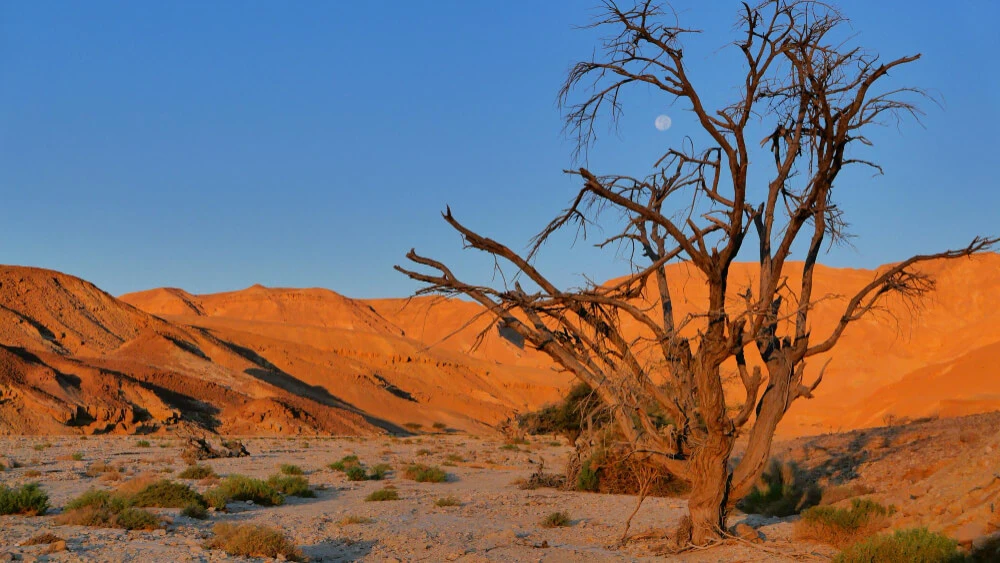
Updated On: March 26, 2024 by Yasmin Elwan
The Kalahari Desert, spanning vast stretches of Botswana, Namibia, and South Africa, stands as a symbol of both natural beauty and cultural endurance. In this seemingly inhospitable landscape, the Bushmen, also known as the San people, have carved out a way of life that is inextricably linked to the land. For tens of thousands of years, these indigenous inhabitants have adapted to the desert’s harsh conditions, honing a wealth of knowledge about their environment.
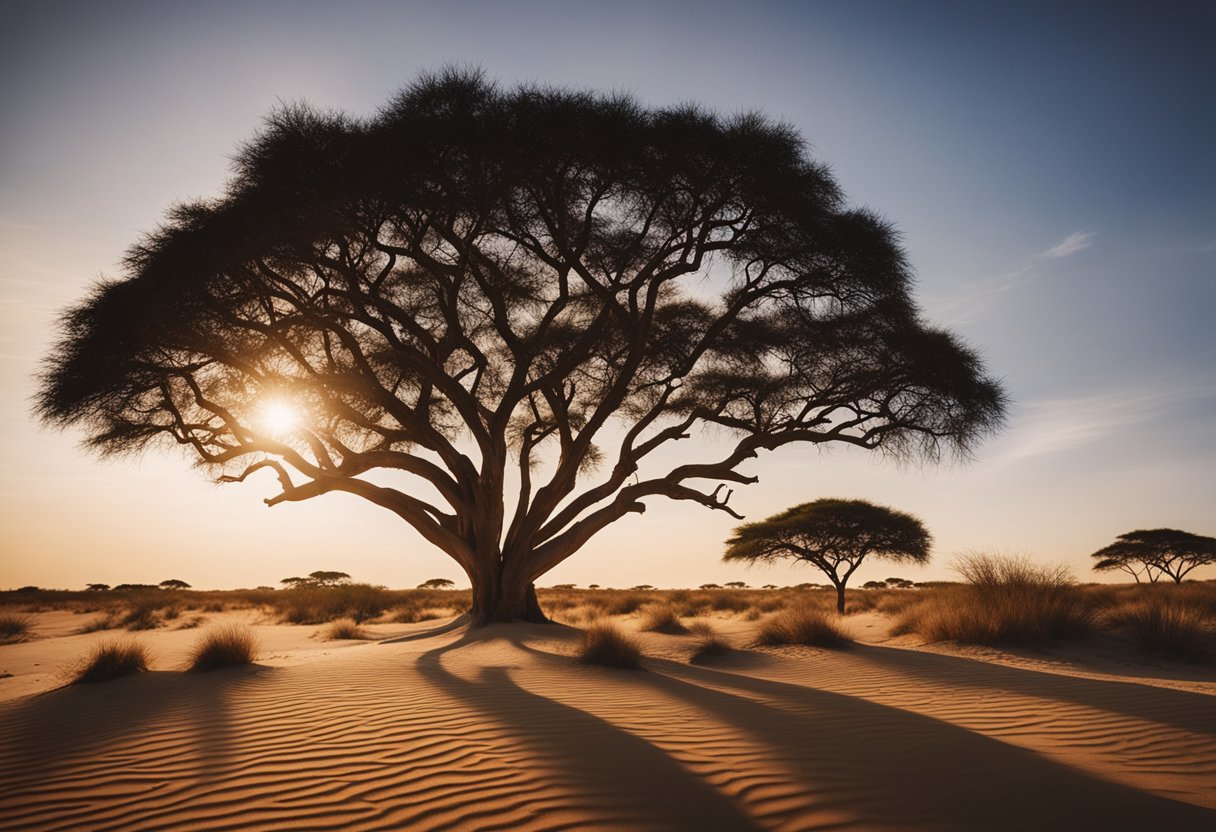
However, the Bushmen of the Kalahari are embroiled in a relentless battle to retain their ancestral lands and traditional lifestyle. A complex weave of socio-political conflicts challenges their very existence. Their fight for rights, coupled with the impact of modern developments, tourism, and global media narratives, shapes a poignant story of resilience and survival. The desert’s future, and that of its people, hinges on a global understanding of these issues and a collective response that recognises their right to maintain their land and way of life.
Geography and Climate of the Kalahari
We explore the vast expanse of the Kalahari, uncovering its geological makeup and the climate that shapes life in this part of Southern Africa.
Kalahari Desert Terrain
The Kalahari Desert is characterised by its extensive sandy savannah that stretches across Botswana, Namibia, and parts of South Africa. This terrain is not a desert in the traditional sense, as it receives in excess of 250 millimetres of rain annually. Nonetheless, it presents a challenging environment, mainly consisting of a sand-covered plain that rises over 900 metres above sea level in certain areas. Despite the arid conditions, the Kalahari supports a variety of plant life adapted to its deep sandy soils.
- Botswana: Encompassing the central part of the Kalahari, its terrain features vast tracts of land dominated by silver terminalia sandveld, acacia, and Kalahari apple-leaf, intermingled with patches of grassland.
- South Africa: Here, the Kalahari encroaches into the Northern Cape region, displaying red sand dunes that become more pronounced towards the Kgalagadi Transfrontier Park.
- Namibia: The Kalahari’s reach extends to eastern Namibia, presenting a somewhat different landscape with camelthorn trees scattered among the grassy dunes.
Weather Patterns
In the Kalahari, extreme temperature fluctuations are a hallmark of the region’s weather patterns. During the scorching summer months, shade temperatures can soar to 43-46°C, yet they plummet to 21-27°C at night. Winter months bring even more dramatic shifts, with nighttime temperatures often descending to freezing point, sometimes dipping as low as -12°C. Weather conditions in the Kalahari are influenced by the Intertropical Convergence Zone, which brings rainfall during the summer.
- Summer: The hot and wet season, where thunderstorms frequently punctuate the heat.
- Winter: Marked by its dryness, with very little rainfall and crisper temperatures.
The Kalahari’s climate is further shaped by its geographic location, which straddles the Tropic of Capricorn, leading to its semi-arid classification. Despite this, rainfall can transform the landscape, bringing forth lush vegetation that supports an abundance of wildlife.
The Bushmen of the Kalahari
In exploring the vast expanse of the Kalahari Desert, we come to appreciate the rich tapestry of life woven by the San people over millennia. Known also as the Bushmen, they are the original inhabitants whose resilient culture and traditional ways offer a window into our collective past.
San People and Their Heritage
The San people, often referred to as Bushmen, represent the oldest continuous residents of southern Africa, with evidence placing their ancestry in the region for over 20,000 years. They have traditionally survived as hunter-gatherers, skillfully adapting to the harsh conditions of the Kalahari Desert. Today, the Khoisan is the term often used to describe two main groups of indigenous people, which include the San and the subsequently related Khoikhoi. The San are noted for their rich oral traditions and deep spiritual connection to the land, which are integral to their identity and way of life.
Cultural Significance
The culture of the Kalahari Bushmen is immense in its historical and anthropological significance. They are known for their remarkable traditional ways, including their distinctive hunter-gatherer lifestyle that has been largely maintained despite external pressures. Their cultural practices, such as trance dances and storytelling, are profound expressions of their spirituality and societal structure, holding lessons for the broader scope of human experience.
Language and Ethnic Groups
The languages of the San are as diverse and distinctive as their culture. One of the most recognised aspects is the use of click consonants, a characteristic that adds a unique dimension to their rich linguistic tapestry. Among their languages, “!Kung” is perhaps the best-known dialect group. While the San are the primary focus here, it’s necessary to acknowledge the related Khoikhoi, who have similar linguistic traits and a shared history with the San people. Both groups are part of the broader Khoisan language family, representing some of the Earth’s oldest linguistic heritages.
Indigenous Lifestyle
In the vast expanse of the Kalahari, the traditional lifestyle of the San people, often known as Bushmen, offers a unique glimpse into one of humanity’s oldest surviving cultures.
Hunting Traditions
The San are renowned for their exceptional hunting skills, a cornerstone of their culture for generations. They employ an intimate knowledge of the desert’s flora and fauna to track and hunt game. The use of poisoned arrows ensures that even larger animals can be taken down with minimal risk, showcasing their deep understanding of the natural resources at their disposal.
Hunter-Gatherer Economy
Hunter-gathering isn’t merely a means of survival; it defines the Bushman economy, being a communal effort that binds the San together. Men typically engage in hunting, while women and children gather fruits, nuts, and roots. This division of labour supports their nomadic lifestyle, ensuring that the community remains self-sufficient.
Settlement Patterns
The San are traditionally nomadic, moving with the seasons to exploit different resources. They do not live in established villages; rather, they stay in temporary settlement camps. These camps are composed of small groupings of huts constructed from local materials, reflecting a lifestyle attuned to the rhythms of the desert.
Contemporary Challenges

In exploring the plight of the Bushmen in the Kalahari Desert, we must consider the numerous contemporary challenges they face. These include severe environmental pressures and the far-reaching threats posed by modernisation, which affect their traditional lands and way of life.
Environmental Pressures
The Kalahari Bushmen, also known as the San people, find their existence threatened by the changing conditions of their environment. Diamond mining activities have significantly altered the landscape of the Kalahari, leading to ecological degradation and water scarcity. The incursion of cattle farming has caused additional strife, as the needs of grazing lands often come into conflict with the preservation of the game reserve and the Bushmen’s traditional hunting grounds. Organisations such as Survival International have highlighted how these environmental challenges are not isolated incidents but part of a growing trend that threatens indigenous populations worldwide.
Threats from Modernisation
Modernisation brings with it a wave of infrastructure development that often disregards the rights and needs of indigenous communities. In the Kalahari, the creation of new settlements and the expansion of current ones exert pressure on the Bushmen’s way of life. Their human rights are often overlooked, as access to their ancestral lands is restricted. Despite legal victories that have affirmed their rights, as seen in the Botswana Bushmen’s fight to live inside the game park, the reality on the ground can reflect a different, harsher truth. Additionally, the encroachment of modern illnesses introduces new diseases to a population already vulnerable due to the changing environment.
Throughout these challenges, the resolve of the Kalahari Bushmen is tested, as they strive to maintain their cultural and physical survival in a rapidly transforming world.
Socio-Political Conflicts
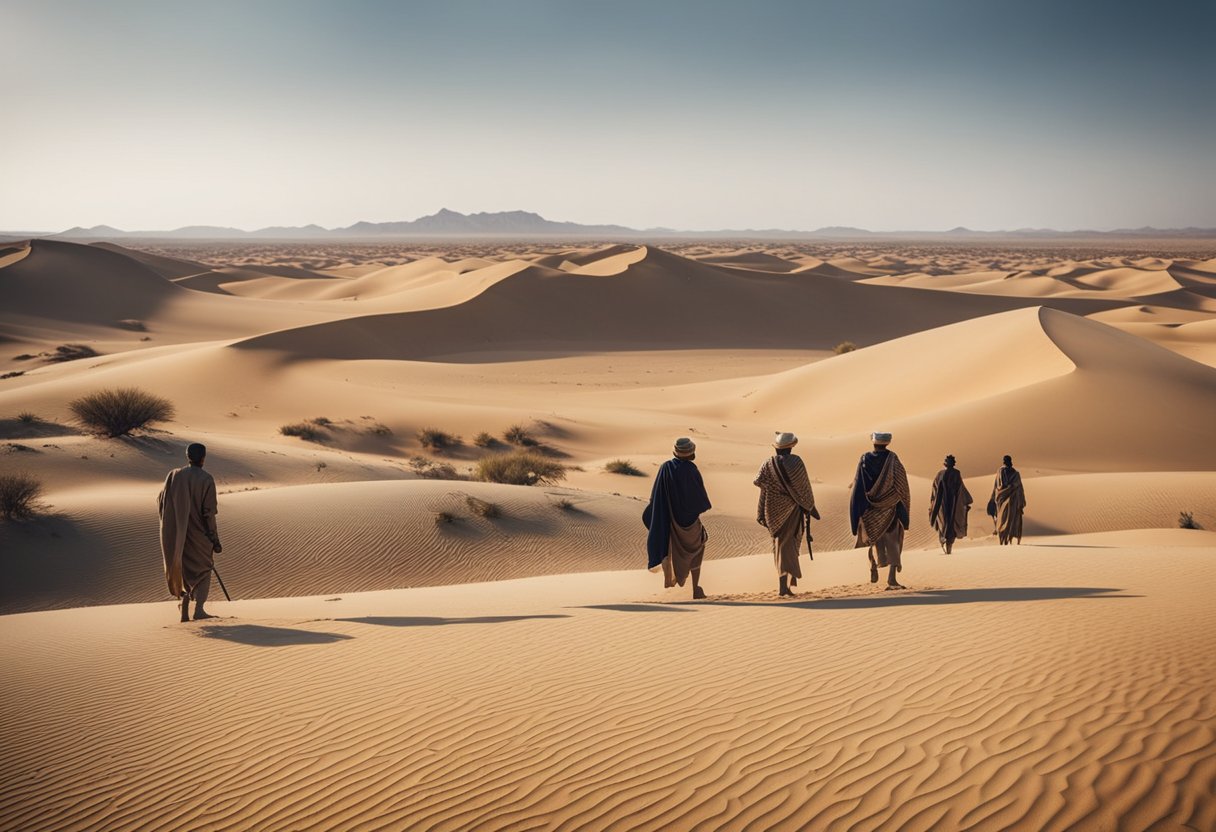
In the heart of the Kalahari Desert, the Bushmen, also known as Basarwa, face ongoing socio-political conflicts that threaten their traditional way of life and connection to ancestral lands. The struggles circle around legal battles with the government and the fundamental human rights underpinning their existence.
Land Rights and Displacement
Land rights are a central issue for the Basarwa, as their ancestral territory has been the subject of legal contestation. The indigenous people’s connection to their land is not only cultural and spiritual but also essential for their survival. Despite a landmark 2006 court ruling that affirmed the Basarwa’s right to live and hunt in the Central Kalahari Game Reserve, implementation has been fraught with challenges. The government’s interests in the land, often tied to conservation efforts or perceived economic potential, clash with the rights of the Basarwa to maintain their traditional lifeways, leading to instances of forced displacement.
Resettlement Camp Impact
Resettlement camps have emerged as supposed solutions to ‘modernise’ the Basarwa, relocating them from their arid homeland to locations with more water resources and access to services. However, these resettlement camps often resemble shanty towns, lacking adequate infrastructure and opportunities, changing the very social fabric of Bushman society.
The transition from a hunter-gatherer lifestyle to a sedentary existence has significant psychological and societal implications, many of which are negative. The shift intensifies issues around poverty and marginalisation, demonstrating that the provision of resources, such as the right to water, does not directly equate to improved living conditions or respect for human rights.
Rights and Campaigns
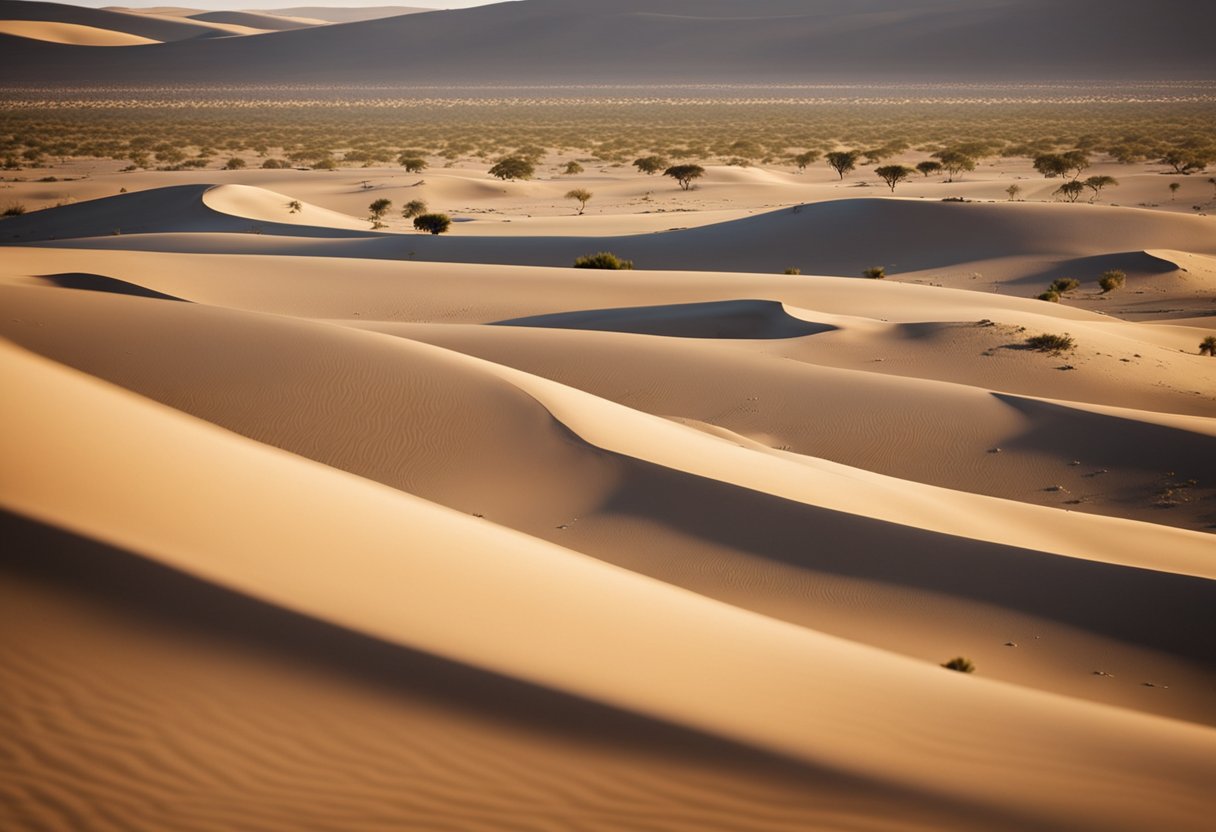
The Kalahari Bushmen’s struggle for rights has gained substantial domestic and international support, leading to significant legal milestones. Their advocacy efforts highlight the importance of upholding the rights of indigenous peoples.
Domestic and International Support
We have observed a groundswell of support for the Bushmen of the Kalahari at both domestic and international levels. Organisations such as Survival International have been instrumental in amplifying the Bushmen’s plight, reinforcing campaigns aimed at defending their ancestral lands. Their endeavours, together with those of human rights groups, have brought the issue to the global stage, demanding attention and action from a broader audience.
Notable figures like Laurens van der Post have contributed to raising awareness, and leaders of the Bushmen community, such as Roy Sesana, have become prominent advocates for their cause. This combined effort has harmonised voices around the world calling for recognition and respect of the Bushmen’s inherent rights.
Legal Milestones and Advocacy
The legal battle waged by the Kalahari Bushmen has seen a series of victories in Botswana’s courts. The High Court and an Appeals Court have both passed judgments favouring the rights of the Bushmen to access water and return to their land. These pivotal legal milestones represent much more than a win in court; they are affirmations of the Bushmen’s rights as indigenous people.
The advocacy doesn’t stop at the courtroom door. It is a continuous push for recognition, respect, and enforcement of laws that protect the Bushmen. Their fight underlines the importance of not just winning legal battles but also ensuring these victories lead to real and sustained change on the ground.
Art and Spiritual Beliefs
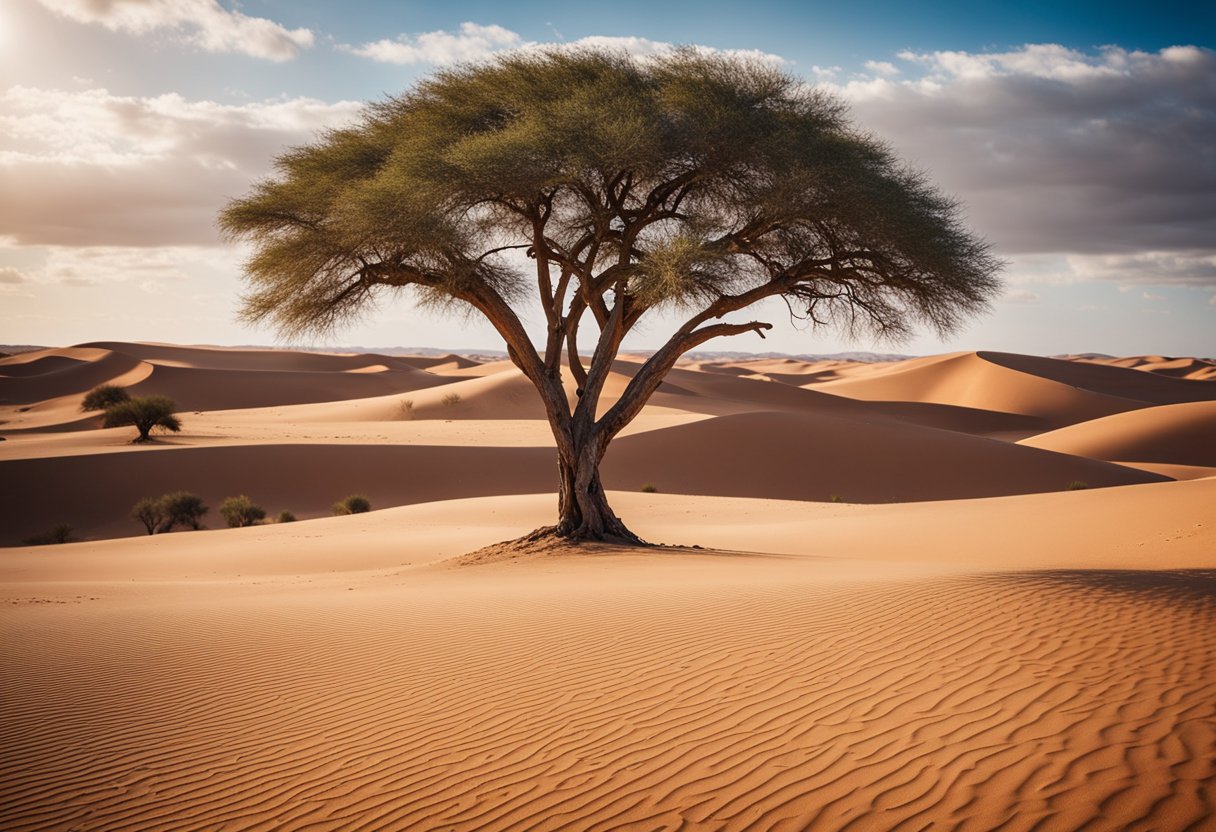
In the vast expanse of the Kalahari, the San people, often known as the Bushmen, express their rich culture through art and spiritual practices. These forms of expression are integral to understanding their connection to the land and their beliefs.
Traditional San Art
The San people have a long history of creating intricate rock art. We find evidence of this creativity in the numerous cave paintings and engravings throughout Southern Africa, many of which depict the eland, an animal that is culturally significant to the Bushmen. These artworks not only serve as a record of the San’s reverence for nature but also function as a canvas for storytelling and cultural preservation.
The vivid scenes often capture the dynamic movement of humans and animals, highlighting the San’s deep understanding and respect for the wildlife with which they coexist. Specific sites containing these artworks have become key to understanding the complex culture and history of the San.
Religious Practices and Mythology
Turning to the spiritual aspect of the San’s lives, their religious practices and mythology are woven into the fabric of their daily existence. Central to their belief system is the practice of trance dances, which serve as both a healing ritual and a way to connect with the spirit world. It is during these dances that the San believe they can engage with the gods and the spirits of their ancestors.
San mythology is rich with stories that explain natural phenomena and the origins of their world. Interpretations of their myths are often depicted in their art, reinforcing the fundamental role these beliefs play in their community. The Bushman religion is a testament to their deep spiritual connection with the Kalahari and the living beings that inhabit it, invoking a sense of unity and continuity within their society.
Impact of Tourism and Economy
In the Kalahari, the interplay between tourism and economic factors has profound effects on both conservation efforts and the traditional lifestyles of the indigenous peoples. Our focus here is to understand the nuances of this dynamic.
Kalahari Game Reserve
The Central Kalahari Game Reserve (CKGR) is a vital part of Botswana’s tourism industry. Established to protect the diverse wildlife, it spans an expansive area and provides sanctuary for numerous species. Tourism here contributes to Botswana’s economy, yet its impact on the traditional life of the Bushmen, or San peoples, is double-edged: providing income and employment opportunities while also potentially threatening their cultural heritage and access to ancestral lands.
Tourism Benefits and Drawbacks
Tourism in the Kalahari brings both benefits and drawbacks. On one hand, it fuels economic growth, with revenues enhancing local infrastructure and services. On the other, tourism can disrupt the traditional life of the indigenous communities.
Benefits:
- Economic development
- Job creation
- Awareness and conservation funding
Drawbacks:
- Potential cultural disruption
- Resource strain
- Limited access to ancestral lands for the San people
Visitors to the CKGR often seek an authentic experience, yet the reality for the San is one of a battle for their rights and resources. Despite the challenges, initiatives aiming to balance conservation and cultural respect are emerging. We see efforts to involve the San directly in tourism, thus shaping an industry that honours their heritage while fostering economic resilience.
Global Perspectives and Media
In this section, we explore the global narrative surrounding the Kalahari Bushmen and their struggle, detailing how various media outlets and cultural works have helped shape international awareness and understanding.
International Media Coverage
The plight of the Kalahari Bushmen has been a subject of international media coverage, bringing attention to their legal battles and the challenges they face in the desert. Prominent platforms like BBC News have reported on the Bushmen’s landmark legal victories, while outlets such as NPR have provided deeper analyses into the complexities of their situation. Such coverage has been pivotal in informing a global audience and igniting discourse on indigenous rights.
Influence of Documentaries and Books
Influential cultural works, including “The Lost World of the Kalahari” by Laurens van der Post, have played a significant role in bringing the story of the Bushmen to a worldwide audience. Documentaries and books like these shed light on the rich heritage and way of life of the Bushmen, while also detailing the adversities they encounter. This resonates deeply with international viewers and readers, contributing to a broader understanding and empathy towards the Bushmen’s cause.
The influence of such documentaries and literary works cannot be overstated; they serve not only as educational materials but also as touchstones for cultural and political discourse on indigenous peoples’ rights.
Through these mediums, the global community gains a window into the lives and struggles of the Bushmen, fostering a well-informed dialogue on their plight and struggles in the Kalahari.
The Future of the Kalahari

In the Kalahari, the future hinges on striking a balance between economic development and the preservation of cultural identity.
Economic Developments
Our focus on sustainable development seeks economic progress that does not compromise the Kalahari’s environmental integrity or the rights of its indigenous peoples. The recent victory in court for the Bushmen signifies a hopeful trend towards recognising traditional land claims, and this recognition stands to affect future economic plans in the region.
We’re witnessing a growing emphasis on democratic approaches to development, with the local communities having a say in the initiatives that affect their lands. In particular, eco-tourism projects are being considered to provide financial benefits while maintaining a low environmental impact.
Cultural Preservation Initiatives
Initiatives for cultural preservation in the Kalahari are expanding. These initiatives honour and maintain the rich traditions of the Bushmen. Interactive cultural encounters are one example where visitors can learn about the Bushmen’s connection to the land, their survival skills, and their deep-rooted customs.
Moreover, partnerships between local leaders and global preservation entities are forming; all in a concerted effort to ensure the rights of indigenous peoples are not only acknowledged but integrated into the fabric of the future Kalahari. These collaborations aim to safeguard traditional knowledge and practices, passing them down to future generations.
Frequently Asked Questions
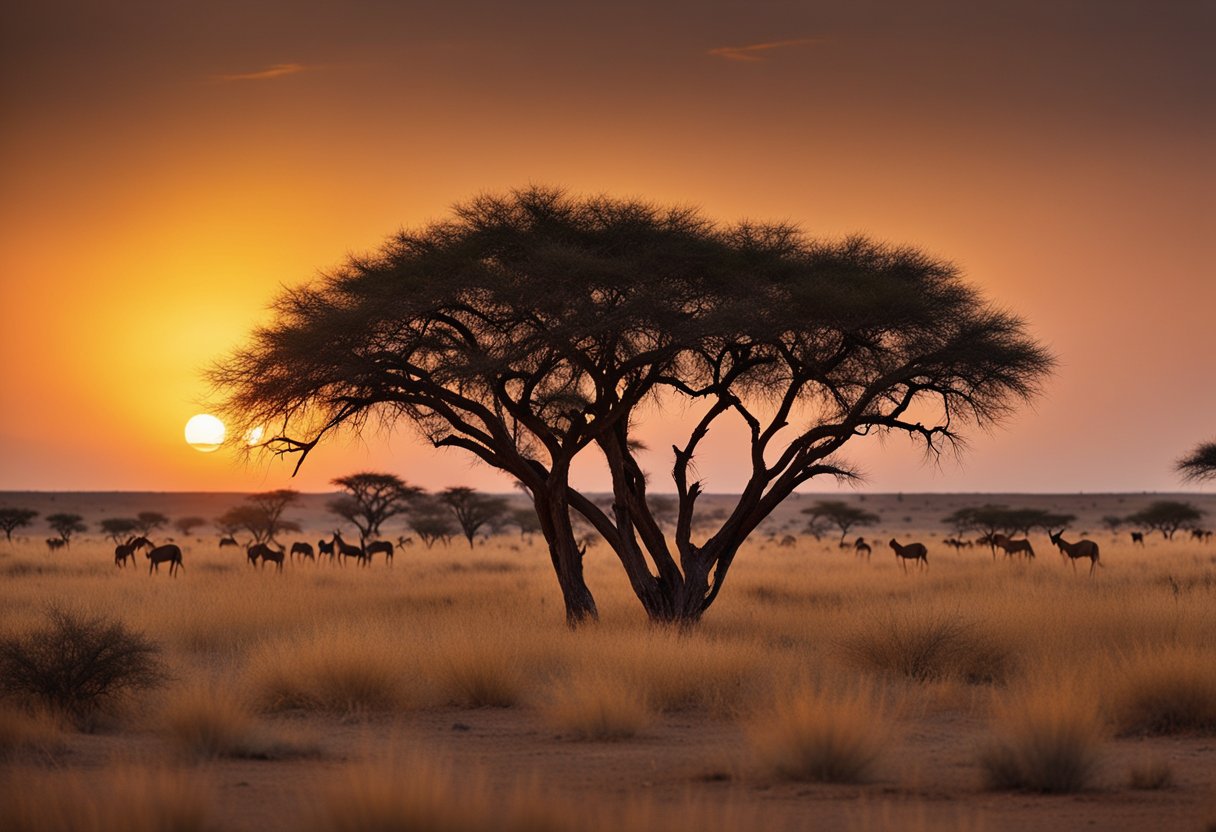
In this section, we’ll be exploring key aspects of the San Bushmen’s unique heritage and their ongoing struggle for survival in the Kalahari Desert. We’ll discuss their cultural traits, sustainable practices, physical characteristics, adaptations, historical challenges, and the preservation of their tribes in contemporary times.
What are the defining characteristics of the San Bushmen’s culture and lifestyle?
The San, also known as Bushmen, have a hunter-gatherer culture deeply connected to the Kalahari Desert’s land and resources. They are known for their ancient rock art, profound spiritual beliefs tied to the natural world, and a language characterised by distinctive clicking sounds.
How do the Bushmen of the Kalahari sustain their way of life in the desert?
The Bushmen have honed traditional survival skills such as tracking, hunting with bows and poisoned arrows, and gathering edible plants, which enable them to thrive in the challenging desert environment. They also possess expert knowledge of water sources, including the ability to find moisture from plant roots and tubers.
What notable traits distinguish the physical appearance of the Kalahari Bushmen?
Bushmen are often small in stature, a trait believed to be an adaptation to their hot, arid environment. They also have light, yellowish skin that sets them apart from surrounding populations. This physical appearance is an evolutionary response to living in the desert for thousands of years.
In what ways have the Kalahari Bushmen adapted to their environment?
The Bushmen’s adaptations are remarkable, from the ability to store water in ostrich eggshells to the knowledge of harnessing the medicinal properties of plants. They craft clothing from animal skins, construct portable shelters, and possess a deep understanding of the Kalahari’s ecosystem.
What historical events have shaped the lives of the Bushmen in the Kalahari Desert?
Land dispossession, conflict with national governments and farming communities, and the struggle for access to natural resources have significantly impacted the Bushmen. Efforts to modernise and assimilate these indigenous populations, such as relocating them from their ancestral lands, have also altered their traditional way of life.
How is the continuity of Bushmen tribes being maintained in the modern era?
Despite ongoing challenges, the Bushmen strive to preserve their heritage through community initiatives, legal battles for land and water rights, and cultural tourism that shares their history and lifestyle with the world. Advocacy by international organisations and increased legal protection also contribute to safeguarding the future of the Bushmen tribes.






